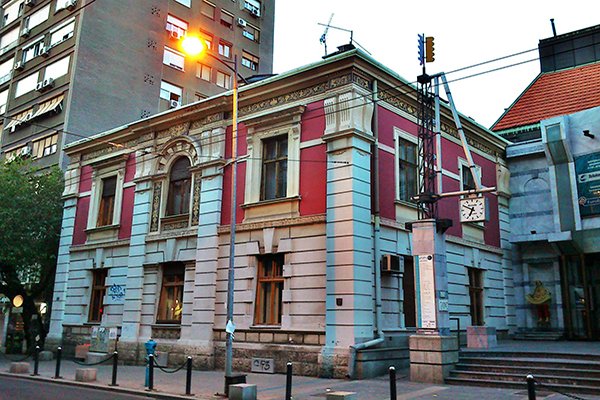The first disco/club in Belgrade was opened 54 years ago
During the pandemic, when there are no discos, clubs, festivals, nightlife and dance until the early morning hours, I write about first discothèque on Blakan - "Kod Laza Secera", home of Serbian Minister Jevrem Grujic, a building designed by famous Belgrade architect Milan Kapetnovic the first to be protected by the Institute for the Protection of Cultural Monuments of Belgrade.

One of the main symbols of Belgrade are nightlife and partying until dawn, numerous underground clubs, but also fancy rafts. The first disco in Serbia was opened 54 years ago in Belgrade, more precisely on April 24, 1967, even 10 years before the famous Studio 54 in New York.
At that time, discos existed only in Paris, Milan and London. In the house that belonged to the politician and diplomat, the founder of the Liberal Party, the Minister of Justice, a member of the Grand Court, the ambassador, Jevrem Grujić, in the basement of the building at Svetogorska 17, a group of young people gathered at his great-grandson Lazar Šećerović to listen to records.
The disco was founded by Milan Šećerović, Sasa Nikolić and Brana Samardžić after the reputation of the Parisian "Castel", which still exists today, but it became known for its owner Lazar Šećerović, so it was named "Kod Laza Šećera".
At that time, it was not possible to become a private owner, so the disco was opened under the auspices of the Red Star Basketball Club. On the first evening, some of the most eminent Belgrade intellectuals appeared, such as Mira Trailović, Jovan Ćirilov, the painter Ivan Tabaković and the famous surrealist poet Dušan Matić, who said:
"Now that the balls at Naumović and Šećerović have started again, it means that communism has begun and a new age is coming. "
Journalists as well as the entire troupe of the Atelier 212 theater were present. Their gatherings represented a novelty in social understandings. For example, girls could come alone, have fun, play unaccompanied. Choreographer and ballerina Lokica Stefanović performed her famous dance, for which she later became famous.
Belgrade was the cultural capital of the SFRY in the 1960s, which was also recognized by European cultural policy, however, the word about the "subversive, bourgeois litter of our youth infected with the West" spread through the capital.
Dico "Kod Laza Šećera| was the center of nightlife and a must-see station for great world stars such as Omar Sharif, Marisa Berenson, Alain Delon, Brigitte Bardot, Omar Sharif, Charles Aznavour and others, who visited Belgrade at the time.
Fans of dance and music could gather at the disco, from 6:30 pm to 1 am after midnight every day, and admission was free. After midnight, the party mostly moved to the apartment above, where Lazar Šećeranović lived.
Stories began circulating in the city about the disco, which, as they condemned, "destroyed the morale of the socialist youth", as well as the fact that it was "the seat of the CIA and spies". Precisely for these reasons, the disco did not "live" for long, so at a special session of the Supreme Council of Defense of the SFRY, a decision was made to close the disco because it "corrupts the progressive socialist youth."
The disco was closed due to pressure and private parties never stopped.
Fashion magicians such as Pako Raban and Renato Balestra danced.
Almost half a century later, a disco called Šećer was reopened in the Jevrem Grujić House.
